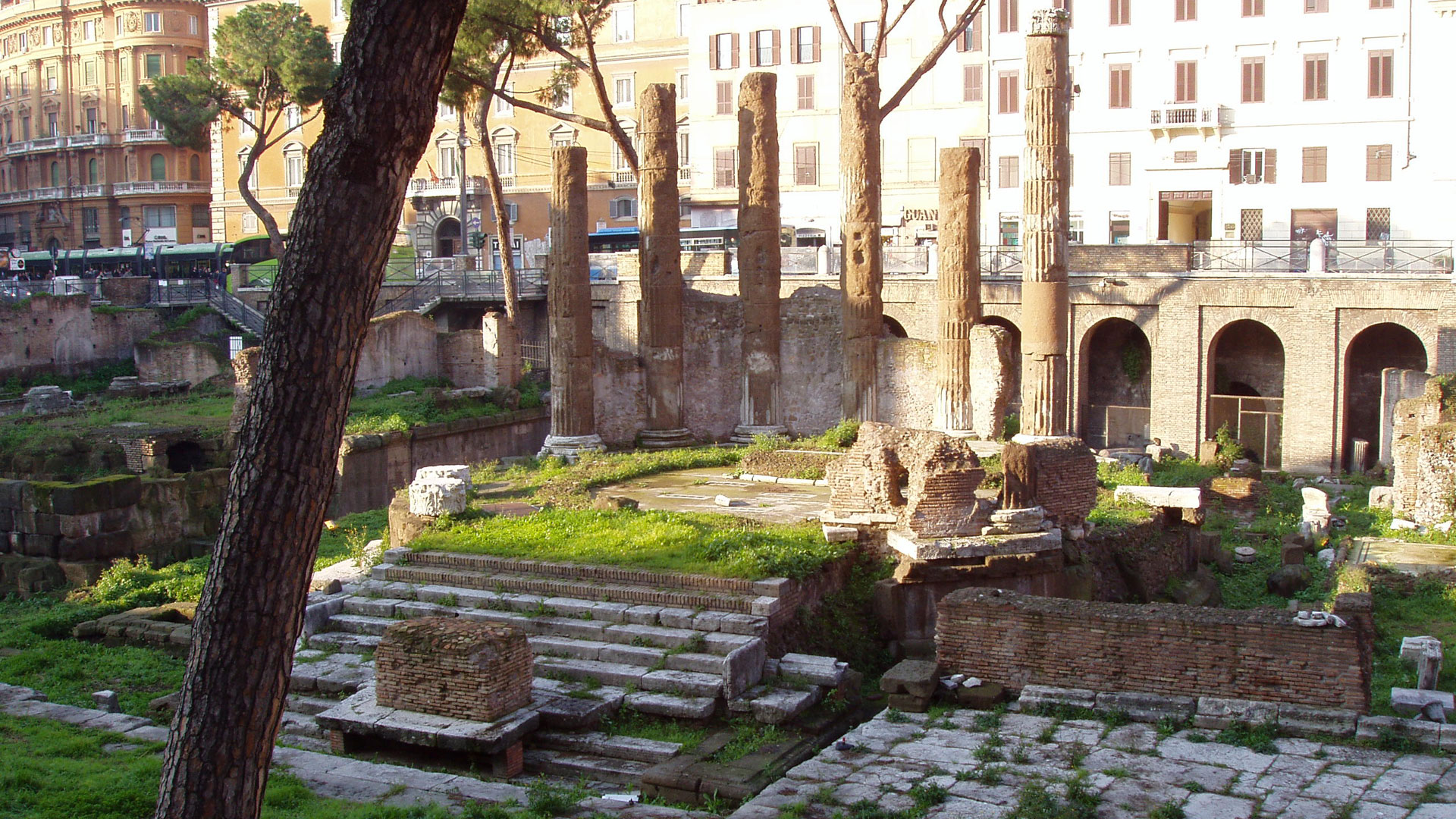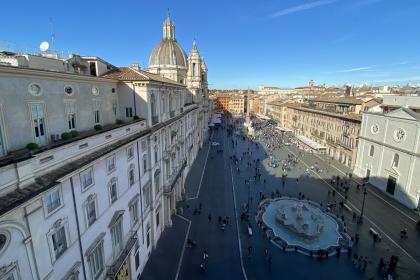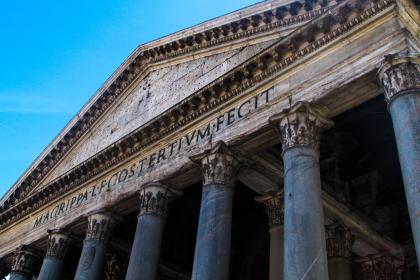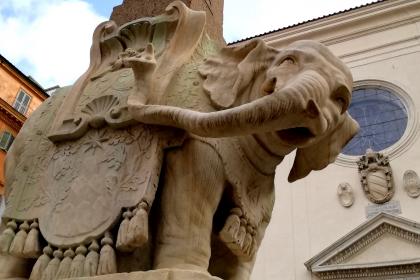
Between 1926 and 1929, the demolition of an old neighborhood within Via del Teatro Argentina, Via Florida, Via San Nicola de 'Cesarini, and Corso Vittorio Emanuele II for the construction of new buildings, unexpectedly brought to light one of the most important archaeological sites of the city: a large paved square with the remains of four temples from the Republican era.
The temples are commonly indicated with the first four letters of the alphabet since their identification is not yet completely certain.
Temple C - late 4th early 3rd century BC - was probably dedicated to the goddess Feronia. Temple A - mid 3rd century BC - on the same level, was named after Giuturna. Temple D was built at the beginning of the 2nd century BC and was dedicated to the Lari Permarini or, according to other hypotheses, to the Nymphs.
In tuff slabs, the first floor was probably built after the devastating fire of 111 BC. To this floor is linked the construction of Temple B, with a circular plan on a high podium, identified with the temple of Fortune huiusce diei, or Fortuna of the present day.
The site is also famous because here, at the Ides of March of 44 BC, the mortal conspiracy against Julius Caesar took place. The archaeological area was named "Argentina" from Argentoratum, today Strasbourg, city of origin of Johannes Burckardt (Giovanni Burcardo), Alexander VI Borgia's master of ceremonies, also known as the bishop argentinensis. He, in fact, called Argentina the tower included in his building in Via del Sudario, now the seat of the Museo Teatrale.
Navona Square

 Condividi
Condividi
The most iconic square of Baroque Rome
The Pantheon

 Condividi
Condividi
Piazza della Minerva

 Condividi
Condividi
Information
 Condividi
Condividi
Location
To find out about all accessibility services, visit the Rome accessible section.











































